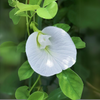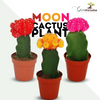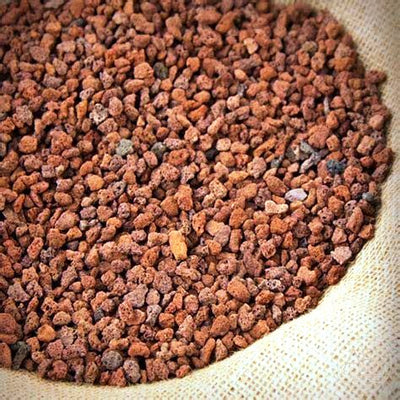
Cultivating Mini Pomegranate Bonsai: A
Petite Marvel of Nature
The art of bonsai cultivation has fascinated gardeners and nature enthusiasts for centuries. It allows us to create miniature worlds of beauty, capturing the essence of nature in a tiny, living form. Among the various species that lend themselves well to bonsai artistry, the Mini Pomegranate Bonsai stands out as a petite marvel of horticultural ingenuity. In this article, we'll explore the captivating world of Mini Pomegranate Bonsai and learn how to care for and nurture these exquisite creations.
Understanding the Mini Pomegranate Bonsai
- Punica granatum nana, the Mini Pomegranate, is a naturally occurring dwarf variety of the regular pomegranate tree.
- It's a native of Afghanistan and northern India, known for its striking ornamental and fruit-bearing properties.
- In bonsai form, it exhibits the same vibrant, red-orange flowers and miniature fruits that make its full-sized counterpart so popular.
Aesthetically Pleasing:
The Mini Pomegranate Bonsai's vibrant, trumpet-shaped flowers and petite fruit add a burst of color to your bonsai collection.
Fruitful Beauty:
While the fruits are not edible due to their size, they lend a unique charm to your miniature landscape.
Ease of Care:
These bonsai trees are generally easy to care for, making them an excellent choice for beginners and experienced enthusiasts alike.
Growing Your Mini Pomegranate Bonsai
Light: Place your Mini Pomegranate Bonsai in a sunny location, ideally receiving at least 6 hours of direct sunlight daily. If grown indoors, use a grow light.
Soil:
Use well-draining, sandy soil. A mix of regular potting soil and sand in a 2:1 ratio is suitable.
Watering:
Mini Pomegranate Bonsais prefer slightly moist soil. Water them when the top inch of soil is dry to the touch. Make sure the pot's excess water can drain out.
Pruning and Shaping:
Regular pruning and shaping are essential for maintaining the bonsai's form. Prune back long shoots and shape the tree during the growing season (spring to autumn).
Fertilization:
Feed your Mini Pomegranate Bonsai with a balanced, water-soluble fertilizer every two weeks during the growing season.
Repotting:
Repot your bonsai every 2-3 years in the spring, using fresh soil and slightly trimming the roots to maintain the desired size.
Potential Challenges
Mini Pomegranate Bonsais are relatively hardy, but they can face a few challenges:
Pests:
Watch out for aphids, scale insects, and mealybugs. Apply insecticidal soap or neem oil to them right away.
Disease:
Root rot can occur if the soil remains too wet. Ensure proper drainage and watering practices to prevent this.
The Beauty of Patience
- Cultivating a Mini Pomegranate Bonsai is a journey that requires patience and dedication.
- These miniature marvels take time to develop, but the reward is a captivating, living work of art.
- As they grow and evolve, you'll find a deep sense of satisfaction in your role as both gardener and artist.
- Mini Pomegranate Bonsais are a wonderful choice for anyone looking to enter the world of bonsai gardening.
- Their charming flowers, petite fruit, and relatively straightforward care make them an ideal companion for both beginners and experienced enthusiasts.
- Remember, while you're nurturing this bonsai, you're also crafting a piece of living art that will bring joy and beauty to your life for many years to come.
Cultivating Mini Pomegranate Bonsai: A Guide to
Petite Perfection
If you're looking to add a touch of natural elegance to your living space or garden, the mini pomegranate bonsai could be the perfect choice. These charming little trees not only bear delightful fruits but also serve as a fascinating and beautiful addition to your home or garden. In this guide, we'll take you through the steps on how to grow your own mini pomegranate bonsai, helping you nurture this symbol of life, rebirth, and vitality into a thriving masterpiece.
Selecting the Right Plant
- Begin your journey by selecting a healthy mini pomegranate plant.
- Look for one at a local nursery or garden center, or you can even propagate one from a mature pomegranate tree.
- If you're starting from seeds, soak them in water for a day to soften the seed coat, which will help germination.
Pot and Soil Selection
- Choose a well-draining pot with a diameter of 8-10 inches.
- Mini pomegranate bonsais are well-suited to container life.
- Use a potting mix that combines equal parts of regular potting soil, perlite, and sand.
- This mixture ensures proper drainage, which is crucial for the bonsai's health.
Planting Your Mini Pomegranate Bonsai
- Plant your pomegranate seedlings or saplings in the prepared pot.
- Make a hole in the soil and place your plant at the same depth as it was in its previous container.
- Water thoroughly after planting.
Sunlight and Temperature
- Mini pomegranate bonsais adore sunlight.
- Your bonsai should be placed where it can get at least six hours of direct sunlight per day.
- However, protect your tree from scorching midday sun in hot climates.
- They thrive in temperatures between 50°F to 85°F (10°C to 30°C) but can tolerate slightly lower temperatures during the winter.
Watering
- Water your mini pomegranate bonsai when the top inch of soil becomes dry.
- Always water thoroughly but ensure that the pot has proper drainage to prevent root rot.
- Overwatering can be a common pitfall, so monitor the soil's moisture carefully.
Pruning and Training
- To maintain the characteristic bonsai shape, regular pruning and training are necessary.
- Pinch back new growth and remove any unwanted branches.
- As your tree grows, wiring can help guide its shape.
- Be cautious not to damage the branches.
Fertilizing
- During the growing season (spring and summer), fertilize your mini pomegranate bonsai every two to four weeks with a balanced liquid fertilizer.
- Reduce or stop fertilization in the fall and winter when the tree enters dormancy.
Repotting
- Repot your mini pomegranate bonsai every 2-3 years in early spring.
- This provides fresh nutrients and promotes healthy root growth.
- Gently trim the roots during repotting to prevent them from becoming pot-bound.
Pests and Diseases
- Watch out for pests such as mealybugs and aphids.
- Use insecticidal soap or neem oil to treat infestations as soon as possible.
- Proper watering and ventilation can prevent most fungal diseases.
10. Enjoying the Fruits
- With patience and care, your mini pomegranate bonsai will bear small pomegranates.
- While they may not be as large as those from a full-sized tree, they're equally delightful.
- Harvest the fruits when they turn a vibrant red and enjoy the sweet-tart taste.
- Growing a mini pomegranate bonsai can be a rewarding experience.
- It teaches patience, horticultural skills, and provides a stunning natural element to your living space.
- With the right care, your mini pomegranate bonsai will thrive and bring you joy for many years to come.


















